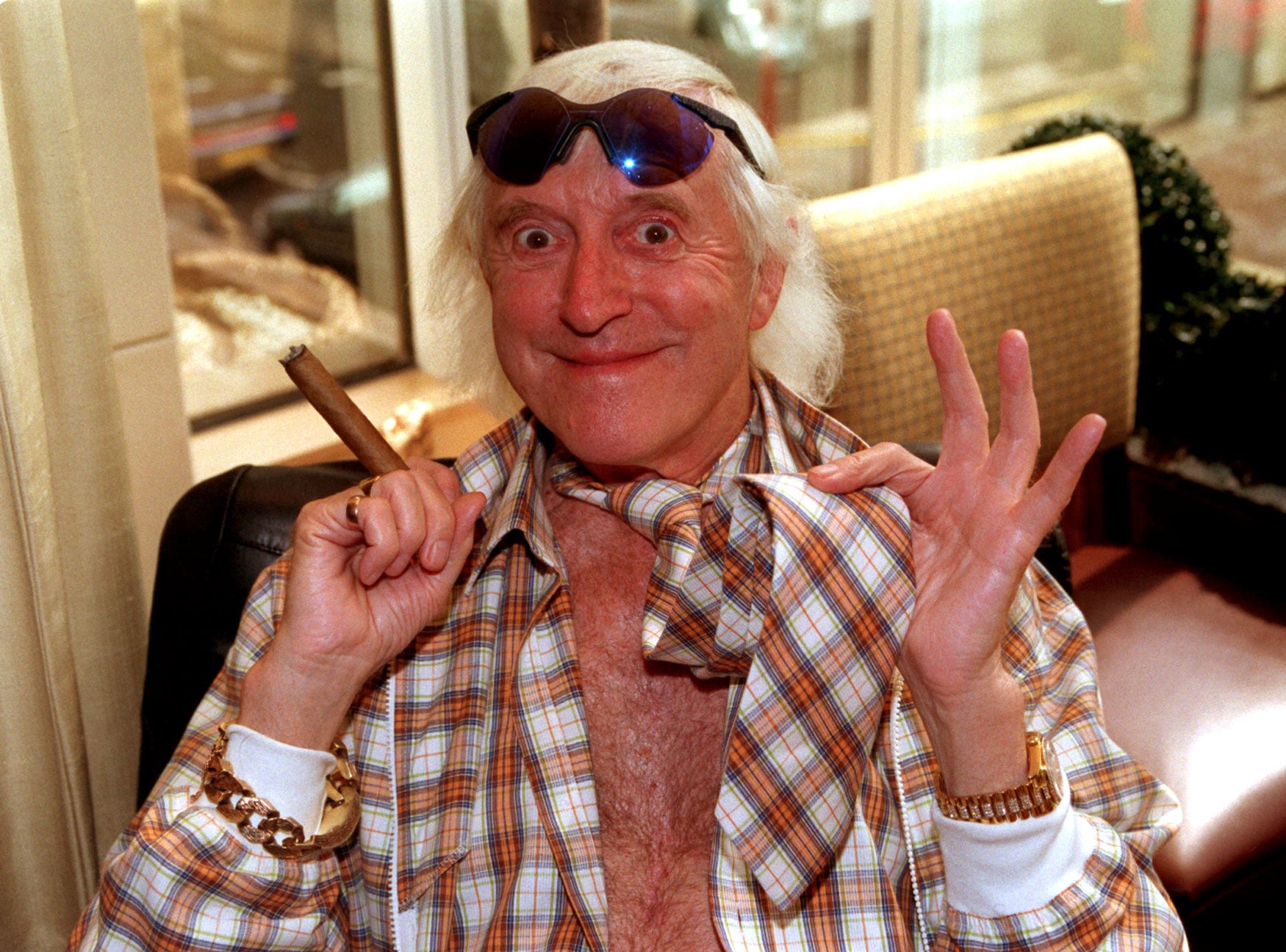New Netflix documentary examines how Jimmy Savile ‘hid in plain sight’
The programme explores the disgraced entertainer’s relationship with the public, members of the royal family and celebrity culture.

Your support helps us to tell the story
From reproductive rights to climate change to Big Tech, The Independent is on the ground when the story is developing. Whether it's investigating the financials of Elon Musk's pro-Trump PAC or producing our latest documentary, 'The A Word', which shines a light on the American women fighting for reproductive rights, we know how important it is to parse out the facts from the messaging.
At such a critical moment in US history, we need reporters on the ground. Your donation allows us to keep sending journalists to speak to both sides of the story.
The Independent is trusted by Americans across the entire political spectrum. And unlike many other quality news outlets, we choose not to lock Americans out of our reporting and analysis with paywalls. We believe quality journalism should be available to everyone, paid for by those who can afford it.
Your support makes all the difference.The director of a new documentary about Jimmy Savile has said it aims to examine the disgraced entertainer’s relationship with the British public and the establishment to explain how he was “hiding in plain sight” for so long.
The new two-part Netflix programme, Jimmy Savile: A British Horror Story, delves into archive footage covering a 50-year period to consider how one of the biggest stars in television got away with his crimes as a prolific sex offender.
It also explores Savile’s relationship with the Prince of Wales, in particular the letters they exchanged over many years during which the presenter often provided advice on public and family matters.
The documentary’s director, Rowan Deacon, told Times Radio that some of the material they examined was Savile’s correspondence with Charles, which, she said, gave them an “understanding of the nature of the friendship that they had”, which she feels has not been fully understood before.
She said: “I suppose what was most interesting, and why we’ve included those in the film, which looks really broadly at many reasons why Jimmy Savile wasn’t apprehended before he died, is that the relationship was one where Prince Charles trusted and respected Jimmy Savile.
“And I think that’s really interesting because I think what we were trying to do is look honestly at our, the British public’s, relationship with Jimmy Savile, in order to try and explain how he got away with it.
“And I think there’s been a temptation to say after the revelations ‘Oh well, I always knew, I always hated the man’. That seems to be the common answer we got when we phoned people up.
“And I think that’s unhelpful because I don’t think the archive material or footage brought that out. I think that isn’t the case. He was trusted and respected. And I think that we need to look at that in order to understand how perpetrators behave and how this happened.”
Deacon noted in conversation with The Times 2 supplement that they are “not suggesting for one moment” that the prince knew what Savile was “really up to”.
The director also said that a great deal of the more than 700 hours of footage that the documentary team looked at had been put away following the revelations of Savile’s years of sexual abuse.
Through her analysis, she feels his approach at “hiding in plain sight” changed across the decades.
She said: “I think in the 1960s and 1970s what’s most shocking is that his what we now describe as lascivious, creepy, assaulting behaviour on women, which is happening in front of the camera on broadcast footage, what’s shocking about that is not that he’s doing it, because we now know what we know, it’s that nobody blinks an eye, it’s completely normal.
“So I think that the social conditions at the time normalised that kind of behaviour.
“I don’t mean the things that we found out that he was also doing, but the sort of public lasciviousness and creepiness (that) was not judged as anything problematic.”
Deacon feels Savile’s tactics changed by the 1990s as by then she thinks he was seen as a “creepy and strange figure” so he himself became the “source of the rumours”.
“He’s the one saying the creepy things and suggesting that he’s up to no good, and I think he does a kind of double bluff with the audience”, she said.
“So it’s quite confusing and people end up thinking ‘Well, he’s sort of saying it so it can’t be true’.
“And I think that kind of psychological game that goes on, it’s quite complex, that we can now look back at in the archive and we also asked our interviewees who were in the archives to look back at it themselves, which was kind of an interesting experience, really helps us to understand how this happened in a way that’s illuminating.”
Savile died in 2011 aged 84, having never been brought to justice.
Charles, the rest of the royal family and most members of the public had no awareness of his crimes before the revelations.
He is now believed to be one of Britain’s most prolific sex offenders.